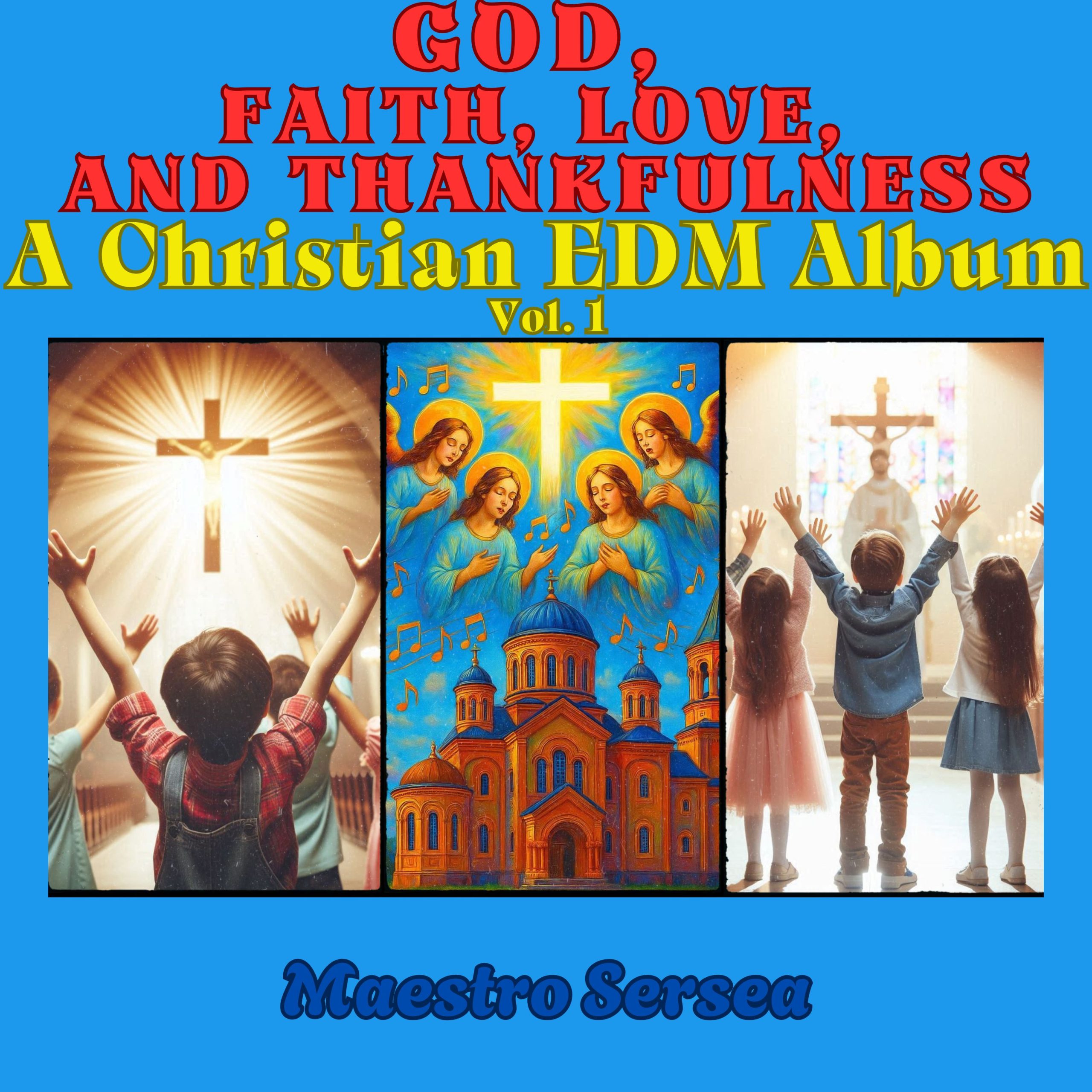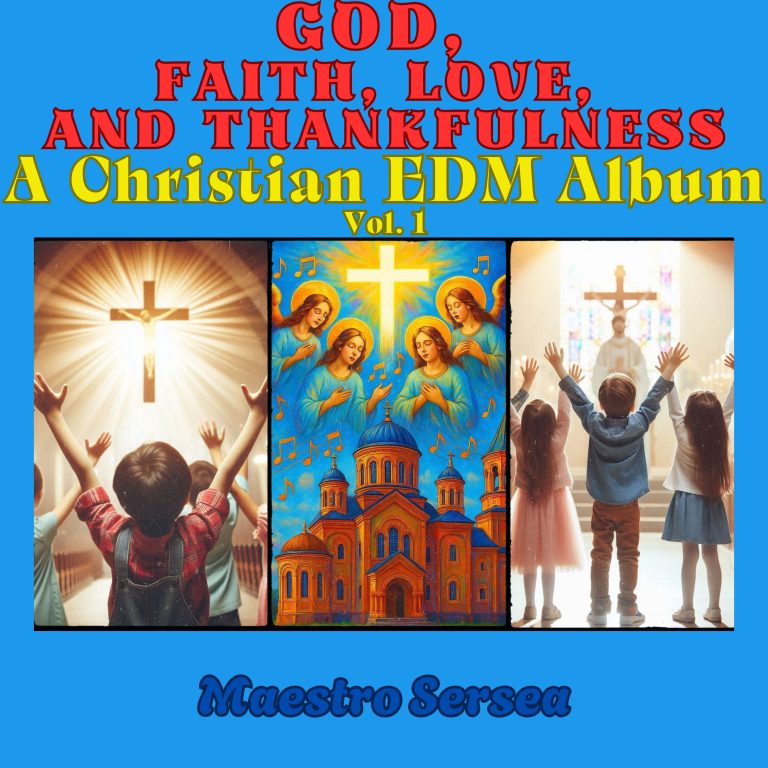
God, Faith, Love, and Thankfulness Album Cover
Lyrics
Lost and Found 2
Add a Caption
trance, techno, EDM
[Verse]
Running blind
Can’t see the way (ooh, yeah)
Shadows whisper
“Come and stay”
Fear’s a chain
It holds me tight
Lost in the dark
No end in sight
[Prechorus]
Oh
I screamed
I fell
I burned (burned)
Nowhere to go
No lessons learned
[Chorus]
But I found the light
Oh-oh
I found the light (ooh-yeah!)
Through the pain
The fight
I rise tonight (tonight)
Found joy
Found love
Found peace in the sound
I was lost
But now I’m found (I’m found, I’m found!)
[Verse 2]
Anger danced
It led the show
Tears would fall
But I let them flow
Addiction’s voice
It sang so sweet
A hollow rhythm on repeat
[Prechorus]
Oh
I broke
I cried
I yearned (yearned)
In the flames
My soul returned
[Chorus]
And I found the light
Oh-oh
I found the light (ooh-yeah!)
Through the pain
The fight
I rise tonight (tonight)
Found joy
Found love
Found peace in the sound
I was lost
But now I’m found (I’m found, I’m found!)
“Lost and Found 2” – Conservative Christian Analysis
Summary
“Lost and Found 2” continues the redemption narrative with rawer emotional honesty—depicting rock-bottom desperation before breakthrough. The song portrays believers experiencing anger, tears, addiction’s seduction, and internal burning before discovering light through pain. It emphasizes that genuine conversion often requires hitting bottom, breaking completely, and experiencing God’s restoration through suffering—not avoiding difficulty but finding Christ within it.
Biblical Foundation
Rock-Bottom Necessity – “I broke, I cried, I yearned…in the flames, my soul returned” reflects biblical pattern where God often works through complete brokenness. Luke 15’s prodigal son hits bottom before returning home. Psalm 51 shows David’s deepest repentance following moral collapse.
Addiction’s Deception – “Addiction’s voice, it sang so sweet, a hollow rhythm on repeat” acknowledges sin’s attractiveness and repetitive grip. Romans 7:11 teaches sin deceives through what appears good; Proverbs 27:12 warns about consequences following temptation’s allure.
Suffering’s Redemptive Purpose – “Through the pain, the fight, I rise tonight” suggests God uses suffering for transformation. Romans 5:3-4 teaches suffering produces perseverance, character, hope. 2 Corinthians 12:10 shows weakness becomes opportunity for God’s strength.
Complete Surrender – “I screamed, I fell, I burned” portrays total ego death preceding new life. Galatians 2:20 teaches believers die to self so Christ lives; Romans 6:3-4 shows baptism symbolizes death and resurrection with Christ.
Joy Following Sorrow – “Found joy, found love, found peace” reflects John 16:20-22 (sorrow becomes joy) and 1 Peter 1:6-7 (grief producing faith more precious than gold). Resurrection joy follows crucifixion death.
Internal Transformation – “My soul returned” suggests restoration of spiritual identity. Lamentations 3:21-26 shows hope renewal through remembering God’s faithfulness amid suffering.
American Christian Context
Addiction Crisis – “Addiction’s voice, it sang so sweet” speaks to America’s dual epidemics: substance abuse and behavioral addictions. Millions chase hollow comfort discovering only emptiness multiplies. Only Christ offers genuine satisfaction replacing addiction’s false promises.
Mental Health Integration – “Tears would fall, but I let them flow” and “I broke, I cried” normalize emotional processing. Conservative Christianity increasingly recognizes emotional expression as healthy rather than weak—crying, anger, grief require acknowledgment, not suppression.
Anger’s Destructiveness – “Anger danced, it led the show” portrays rage as enslaving force. American culture encourages anger expression; biblical Christianity warns against sinful anger destroying self and community. Healthy anger requires processing toward forgiveness, not perpetual festering.
Bottom-Hitting Reality – “I screamed, I fell, I burned” addresses uncomfortable truth: some conversions require catastrophic failure. Prosperity gospel’s false promises cause disillusionment; biblical Christianity acknowledges genuine suffering sometimes precedes breakthrough.
Suffering’s Purpose – Conservative theology grapples with suffering’s meaning. This song suggests God works through suffering, not merely preventing it. Hebrews 5:8 teaches even Jesus learned obedience through suffering—suffering becomes formation tool.
Restoration Possibility – “In the flames, my soul returned” offers hope for broken Americans—addicts, the depressed, the suicidal, the morally compromised. No condition places someone beyond God’s redemptive reach. Rock-bottom becomes potential conversion point.
Authentic Testimony – The song’s unflinching portrayal of pain, anger, and brokenness validates believers’ struggles. Conservative Christianity sometimes emphasizes testimonies of quick, painless conversions; this song shows messier, more realistic transformations.
Joy Depth – “Found joy, found love, found peace” suggests joy following genuine suffering runs deeper than shallow happiness. Believers who’ve experienced darkness, despair, and addiction recognize redemptive joy’s profound value.
Assessment
Theologically robust portrayal of conversion through suffering and complete brokenness. Honestly depicts addiction, anger, despair, and internal burning preceding breakthrough—more realistic than sanitized conversion narratives. Particularly relevant for believers struggling with addiction, mental health, or moral failure seeking hope. Shows Christianity not as escape from suffering but as redemptive presence within it. Validates emotional authenticity and recognizes that genuine transformation often requires hitting bottom. Doctrinally sound and spiritually authentic for those experiencing deep brokenness.
